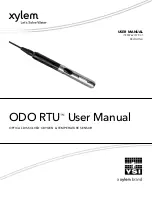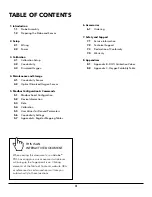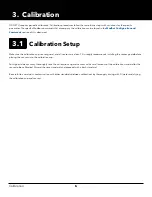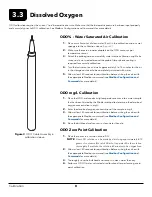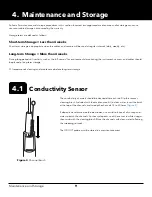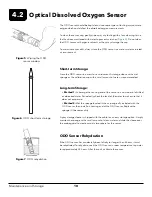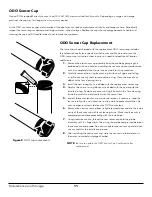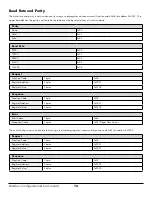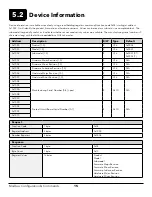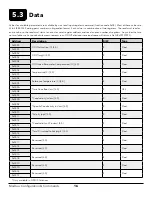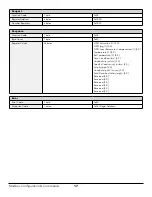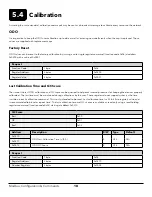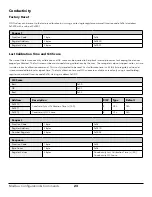
8
Calibration
3.3
Dissolved Oxygen
ODO calibration requires the current “true” barometric pressure. Make sure that the barometric pressure has been input properly
and accurately prior to ODO calibration. See Modbus Configuration and Commands for more details.
ODO% - Water Saturated Air Calibration
1.
Place a small amount of clean water (5 mL) in the calibration cup or a wet
sponge into the calibration sleeve (
Figure 3
).
2.
Make sure there are no water droplets on the ODO sensor cap or
temperature sensor.
3.
Attach the probe guard and carefully slide into the calibration cup. Make
sure a seal is not created around the probe. Atmospheric venting is
required for accurate calibration.
4.
Turn the instrument on and wait approximately 5 to 15 minutes for the air
in the storage container to be completely saturated with water.
5.
Allow at least 40 seconds for equilibration before writing the value with
the appropriate Modbus command (see
for more details).
ODO mg/L Calibration
1.
Place the ODO and conductivity/temperature sensor into a water sample
that has been titrated by the Winkler method to determine the dissolved
oxygen concentration in mg/L.
2.
Enter the dissolved oxygen concentration of the sample in mg/L.
3.
Allow at least 40 seconds for equilibration before writing the value with
the appropriate Modbus command (see
for more details).
4.
Rinse the bulkhead and sensors in clean water then dry.
ODO Zero Point Calibration
1.
Place the sensor in a solution of zero DO.
NOTE:
A zero DO solution can be made by dissolving approximately 8-10
grams of sodium sulfite into 500 mL of tap water. Mix the solution
thoroughly. It may take the solution 60 minutes to be oxygen-free.
2.
Allow at least 40 seconds for equilibration before writing the value with
the appropriate Modbus command (see
for more details).
3.
Thoroughly rinse the bulkhead and sensors in clean water then dry.
4.
Perform a ODO % water-saturated air calibration after performing a zero
point calibration.
Figure 3
ODO Cable Assembly in
calibration sleeve

